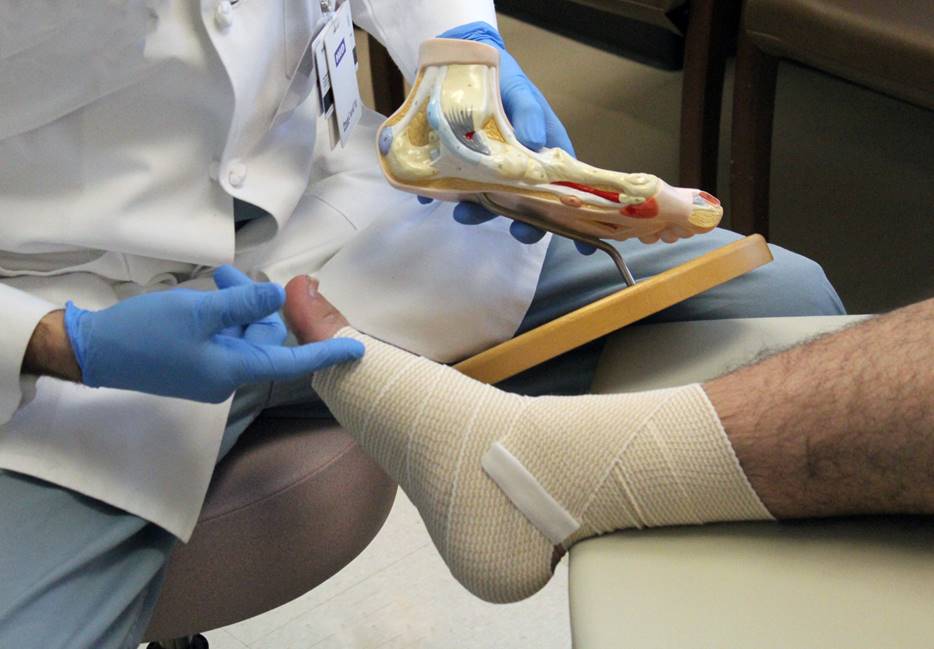Tips for Diabetic Foot Care
Most of us enjoy recreational walks through the park, beach or even the local mall, but we don’t often think about the means of our mobility – our feet. But this isn’t the case for people with diabetes who experience issues with their feet due to nerve and blood vessel damage caused by high blood sugar. Many patients with diabetes lose feeling in their feet and are at risk for developing wounds that can become infected and are difficult to heal, even leading to amputation.
However, this scenario is avoidable for many people through proper diabetic foot care.

Appropriate footwear is a key to keeping your feet healthy. While sandals are a convenient and comfortable option, especially during hot summer months, they don’t offer optimal protection for your feet. A proper fitting shoe, whether a sneaker or a casual shoe and socks, provides the best foot protection. Wearing proper fitting shoes (at least comfortable house shoes) even while at home can prevent stubbing your toes on furniture and possibly causing a wound.
For people who work in careers and industries that require work boots, proper fit is still a must, and two pairs of socks provides even more protection since this type of footwear can often rub the toes. The socks will also wick away moisture from your feet, which helps prevent the breakdown of the skin.
Just as important as proper footwear is diligent foot inspection. In fact, this is imperative, as foot wounds can quickly progress from the soft tissue to bone within a week. Inspecting your feet needs to become part of your daily routine, just like brushing your teeth or putting on deodorant. The easiest way to implement this habit is to do it before or after showering.
A good inspection includes closely observing the top of the foot, which is the most visible, and then the bottom, sides and even between the toes. You may have to ask someone to assist you or use a handheld or wall mirror. You can also take a picture of your feet with your cell phone using the flash. Look for any discoloration, redness or purple areas or possibly an open sore. If you notice any changes in the skin, it is important to see your doctor as soon as possible – waiting may allow an infection to spread. It will not likely get better without medical attention.
As a Baylor College of Medicine nurse practitioner working at Ben Taub Hospital, I have seen many patients who have had their foot amputated after infection set in. This impacted their quality of life and made it harder to work and accomplish the things they previously took for granted, like walks in the park. It’s important to take ownership of your diabetes and manage your foot care—and remember to assist and educate the people close to you.
-By Robert Lee Abbitt, instructor in surgery, AGACNP-BC, in the Division of Trauma and Acute Care Surgery at Baylor College of Medicine
Additional Resources
Learn more about diabetes care.
Read about the Save the Extremity Program (STEP) at Baylor College of Medicine



